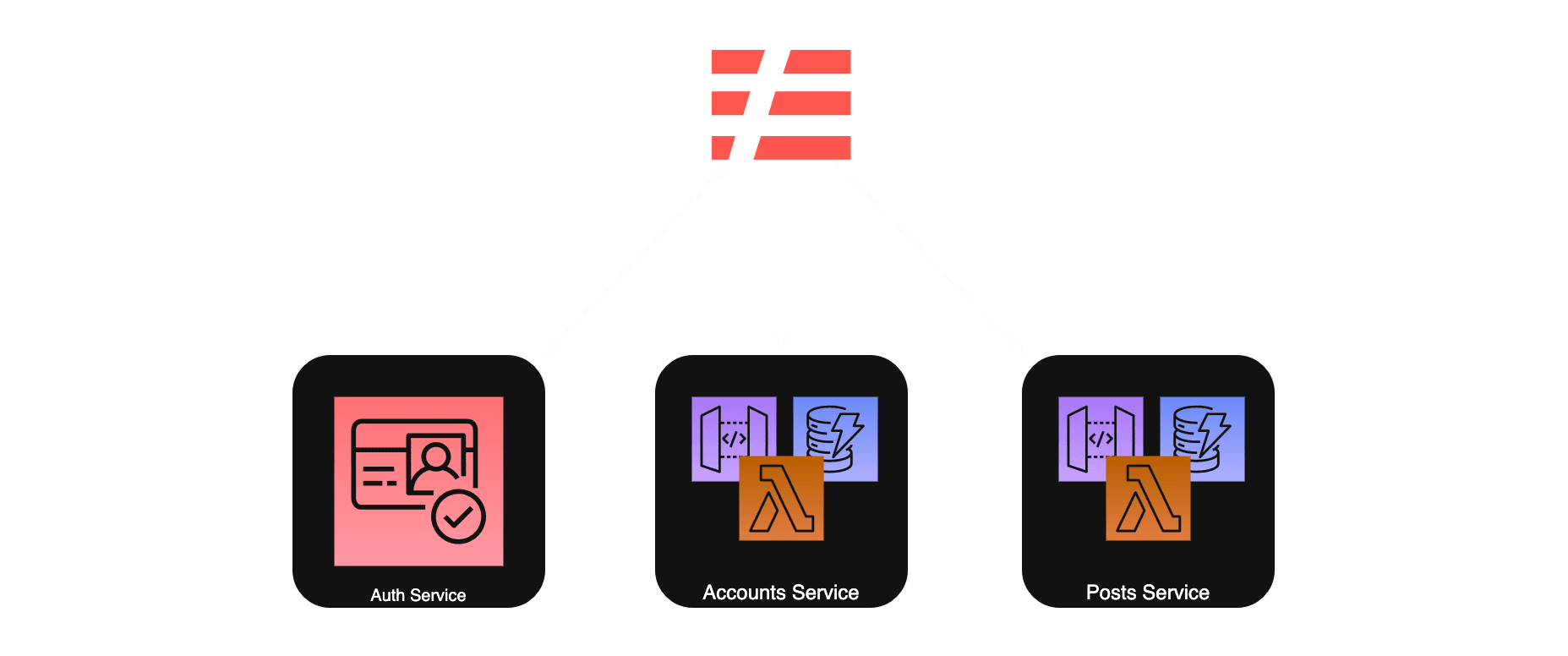- Published on
Using Serverless Framework Compose to Orchestrate Your Microservices
- Authors

- Name
- Zachary Jarnagin
This is a cross post from the ShowNxt developer blog!
Intro

For a Serverless Framework monorepository with multiple microservices, Compose is a vital tool to orchestrate deployments. With a few short steps, you can deploy multiple services with one command and pipe outputs from one service to another via parameters.
Set Up
Getting started is very straight forward. In the root of your project, add a serverless-compose.yaml file
project/
├── serverless-compose.yaml
├── ...
├── auth/
│ ├── serverless.yaml
│ └── ...
├── accounts/
│ ├── serverless.yaml
│ └── ...
└── posts/
├── serverless.yaml
└── ...
This file will reference your other services and deploy them via their respective serverless.yaml files.
# serverless-compose.yaml
services:
auth:
path: auth
accounts:
path: accounts
posts:
path: posts
Deploy
Now that serverless-compose.yaml references all your services, you can deploy them with one command from your root project directory:
serverless deploy
This will deploy your services in parallel. But what if you need to use information from one service in another? For example, say you want to reference a user pool ARN from AWS Cognito in another service for HTTP authorization. You would use outputs and parameters!
Sharing outputs between services
The most useful functionality of the Compose command is passing outputs like ARNs, IDs, or names via parameters. Below is a brief example of passing an ARN, an environment variable, and two resource IDs.
# auth/serverless.yaml
provider:
name: aws
...
environment:
USER_POOL_NAME: shownxt-${opt:stage, sls:stage}-auth-pool
functions: ...
resources:
Resources:
UserPool:
Type: AWS::Cognito::UserPool
Properties: ...
UserClient:
Type: AWS::Cognito::UserPoolClient
Properties: ...
Outputs:
UserPoolArn:
Value:
Fn::GetAtt: UserPool.Arn
UserPoolName:
Value: ${self:provider.environment.USER_POOL_NAME}
UserPoolId:
Value: !Ref UserPool
ClientId:
Value: !Ref UserClient
Now let's make sure the serverless-compose.yaml file passes these outputs to other services.
# serverless-compose.yaml
services:
auth:
path: auth
accounts:
path: accounts
params:
UserPoolArn: ${auth.UserPoolArn}
UserPoolName: ${auth.UserPoolName}
UserPoolId: ${auth.UserPoolId}
ClientId: ${auth.ClientId}
posts:
path: posts
Now that the accounts service references outputs from the auth service, accounts will not be deployed until auth has finished deploying. Any service that depend on another services output will not be deployed until the parent service is deployed.
Then to reference these outputs in another service, for example accounts, we can simply access them as parameters.
# accounts/serverless.yaml
functions:
createAccount:
handler: src/create.handler
events:
- cognitoUserPool:
pool: ${param:UserPoolName}
trigger: PostConfirmation
...
deleteAccount:
handler: src/delete.handler
events:
- http:
path: accounts/
method: delete
authorizer:
name: Authorizer
type: COGNITO_USER_POOLS
arn: ${param:UserPoolArn}
Now you know how to share build outputs between your microservices with the Serverless Framework!
This is just a high level overview of the compose tool from the Serverless Framework. To see more functionality and documentation, checkout the serverless docs in the reference section.